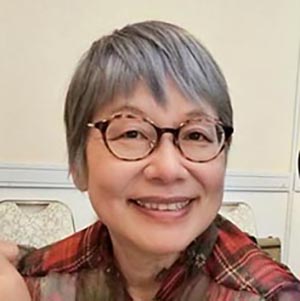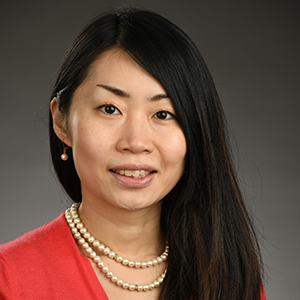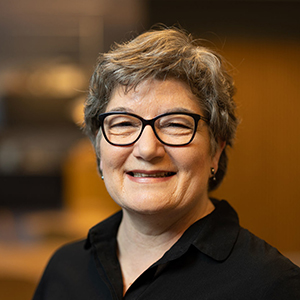|

|
Samurai Love: Homo-Erotic Readings of Japanese Verse in Early Modern Japan
Abstract
With the establishment of peace under the Tokugawa shoguns, the warrior class was encourage to pursue bunbu ryōdō, the twin paths of martial and literary excellence, the latter exemplified by poetry (waka), a genre in which love verses figured prominently. In this talk I will demonstrate how, by general readers, these poems were interpreted homo-erotically, by examining illustrations to both the Ogura One Hundred Poets, One Poem Each (Ogura Hyakunin isshu) collection, and the Warrior One Hundred Poets (Buke Hyakunin isshu).
Biography
Joshua Mostow is a Professor in the Dept. of Asian Studies at the University of British Columbia, Vancouver, Canada. He is the co-editor of Gender and Power in the Japanese Visual Field (University of Hawai’i Press, 2003) and co-author, with Asato Ikeda, of A Third Gender: Beautiful Youths in Japanese Edo-Period Prints and Paintings (1600-1868) (Royal Ontario Museum, 2016), among numerous other publications.
|
 |
Queering Japanese Modern Posters
Abstract
Japan’s modern visual culture, both elite arts and commercial design produced in the first decades of the twentieth century, abounds with images of women. This popularity of women images in modern visual culture has commonly been explained in the context of their role as representation of particular discourses on art, gender and the nation state. Often, the discourse on gender representation is concerned with what the feminine body means, and is dominated by the binary of gender oppression vs. gender empowerment which are associated with particular visual representations. In this context commercial posters and advertisements are usually seen as a medium of oppression, objectification, commodification of the woman body. Paradoxically, by rendering feminine embodiment problematic this perspective marginalizes femininity and perpetuates gender essentialism and determinism. This paper attempts to challenge this binary paradigm through a queer reading or queering of Japanese modern posters. It demonstrates that posters fused signifiers associated with mutually exclusive notions of tradition and modernity, women’s social emancipation and patriarchy, and fine art and commercial products. By acknowledging this complexity, ambiguity and non-determination it will offer a more nuanced understanding of gender and Japanese modern commercial posters.
Biography
Ewa Machotka is Professor in the Department of Asian and Middle Eastern Studies at Stockholm University. She is an art historian specializing in Japan with a transnational education and career in museums and academic institutions. As a researcher she is mainly interested intercultural and interdisciplinary study of Japanese art and visual culture from the perspective of Social Art History, Global Art History, Environmental Humanities and Digital Humanities. Machotka received her doctoral degree from Gakushuin University, Tokyo, and formerly taught at Leiden University, the Netherlands. She also served as a curator at the National Museum in Krakow, Poland. She has published widely in the field of Japanese visual arts, among others Hokusai’s Hyakunin Isshu: Visual Genesis of Japanese National Identity (Peter Lang P.I.E., 2009), and Consuming Life in Post-Bubble Japan: A Transdisciplinary Perspective (Amsterdam UP, 2018, with K. Cwiertka). Currently she is working on a monograph titled Between Absence and Presence: Environmental Disaster in Early Modern Visual Culture of Japan.
|
 |
Postwar Manga as a Vehicle for Depictions of Non-normative Gender
Abstract
Manga have played a dominant role in the dissemination of narratives and images of non-normative genders, sexes, and sexualities in postwar Japan. From Princess Knight (Tezuka Osamu, 1953-54; 1963-64) and The Rose of Versailles (Ikeda Riyoko, 1972-73), through Princess Princess (Tsuda Mikiyo 2002-2006), Wandering Son (Shimura Takako, 2002-2013), My Lesbian Experience with Loneliness (Nagata Kabi, 2016), and countless other examples, postwar manga creators have explored cross-dressing, ambi-gendered and ambi-sexual characters, issues of coercion and consent, and a multitude of LGBTQ identities. This presentation will examine the characteristics of manga as a visual narrative form to identify its particular strengths as a vehicle for the expression of non-normative genders.
Biography
Sharalyn Orbaugh is Professor of Modern Japanese Literature and Popular Culture at the University of British Columbia, and Head of the Department of Asian Studies.
|
|

|
It’s Not Yours To Decide! - subversive images of Chu-pi-ren
Abstract
In my recent exhibition, I featured the Chu-pi-ren (Women’s Union for Liberalization of Abortion and Legalization of the Pill), an organization founded in 1972. The Chu-pi-ren, led by Misako Enoki, wore pink helmets and engaged in radical, subversive, and outrageous activities, which were widely covered by the media. However, the group has been treated as a joke, and not at all appreciated, or even remembered. Mainstream feminists prefer their images of “Kiyoku, tadashiku, utsukushiku” (pure, correct, and beautiful) and criticize over-sexualized images of women (especially Anime), but fall short of creating new, empowering images of women. In this paper, I would like to show my new works of Chu-pi-ren as an icon of subversive and revolutionary spirit.
Biography
Yoshiko Shimada was born in 1959 in Tokyo, and she lives and works in Chiba. Shimada graduated from Scripps College in 1982 and received Ph.D. from Kingston University, London in 2015. She explores the themes of cultural memory and the role of women in the Asia-Pacific War, as both aggressors and victims. As methods of expression, she uses printmaking, installation, video, performance, research and archiving. She also works as an art historian and archivist. Her research interests include art and politics in the post-war Japan, alternative art education, and feminism. Her works have been shown widely in exhibitions such as “Fanatic Heart”, Para Site, Hong Kong (2022-2023), “Japan Unlimited”, MuseumsQuartier Wien (2019), “After ‘Freedom of Expression?’”, Aichi Triennale (2019) and “Beyond Hiroshima” Tel Aviv University Art Gallery (2015). In 2017, she curated “From Nirvana to Catastrophe: Matsuzawa Yutaka and His ‘Commune in Imaginary Space’” at Ota Fine Arts, Tokyo. She currently lectures on feminism and art at the University of Tokyo.
|
 |
The Images of Overseas Japanese Prostitutes in the Asia-Pacific
Abstract
In this presentation, I will look at rare extant visual images of Japanese prostitutes overseas as a way to reclaim their presence in the country’s modern history. In particular, I will examine photographs and postcards circulated in Canada and Singapore around the 1900s.
The sex industry in Japan grew significantly in the early nineteenth century, and, according to Sheldon Garon, about one in thirty-one young Japanese women worked in the industry in the early Taisho period (1912-1926). In 1910, approximately 19,000 Japanese women were working as prostitutes outside the country, in North America and Asia. The women most often came from poor households and, in some cases, from an outcast class, and they were sold into prostitution by their families or deceived into the business.
In North America, Japanese prostitutes became objects of salvation by white Christians or targets for detainment and deportation by immigration offices, yet they were simultaneously idealized, exoticized, and sexualized by Japanophile authors and artists, and the Japanese state capitalized on their popularity in cultural diplomacy. In Asia, where prostitution remained legal under Western imperialist rule and where the Japanese state had growing territorial possessions, “pleasure quarters” administered by the Japanese police later transformed into “comfort stations” managed by the Japanese military.
Biography
Asato Ikeda is Associate Professor of Art History at Fordham University, NY, and the Novo Nordisk Guest Professor at the University of Copenhagen (2023-2024). She is the author of The Politics of Painting: Fascism and Japanese Art during the Second World War (University of Hawaii Press, 2018), the co-author of A Third Gender: Beautiful Youths in Japanese Edo-Period Prints and Paintings (1600–1868) (Brill; Royal Ontario Museum Press, 2016), and the co-editor of Art and War in Japan and its Empire: 1931-1961 (Brill, 2012). Her second monograph Japan in Canadian History: The Art and Visual Culture of Transpacific Crossings is under review by a North American university press. She is a NPO board member of The Asia-Pacific Journal: Japan Focus.
|
 |
Gender and Postcolonial issues in Contemporary East Asian Art
Abstract
From the 1990s forward, as identity politics became pertinent in contemporary art, a number of contemporary artists in Japan and South Korea began addressing gender issues related to ideologies of nationhood and colonial power structures. This includes artists Tomiyama Taeko, Yoshiko Shimada, Ōura Nobuyuki, Kim Seo-kyung and Kim Eun-sung, and others, who address colonial history and cultural memories such as the emperor system, Korean diaspora in Japan, and “comfort women” issues from World War II. Drawing upon W.J.T. Mitchell’s identification of three basic forms of violence in images of public art, this presentation examines ways in which images can be seen as representations of violence, symbolic weapons of violence, as well as acts or objects of violence. Examples of censorship and conflicts among contemporary art exhibitions suggest that issues of gender and colonial history are not confined to a specific nation, but are embedded in much wider and multifaceted discourses on sexual and racial violence, migration, nationalism, and globalization. How do such images enact various emotional responses, and what does the use of visual images mean for dealing with traumatic pasts and encouraging postcolonial reparation?
Biography
Gunhild Borggreen is an Associate Professor in Art History and Visual Culture at Department of Arts and Cultural Studies, University of Copenhagen. Her research covers Japanese art history and contemporary art with attention to gender, technology and nationhood. Borggreen is the Principal investigator of the research project Transcultural Modernism: Artstic Interchange between Denmark and Japan 1945-1970 (2022-2026). Borggreen has published in anthologies such as Gender and Power in the Japanese Visual Field (University of Hawai’i Press, 2003), Participatory Cultures: Arts, Media and Politics (Routledge 2020), The Routledge Companion to Gender and Japanese Culture (Routledge 2019), Consuming Life in Post-bubble Japan: Transdisciplinary Perspectives (Amsterdam University Press, 2018), as well as numerous international peer-reviewed journals.
|
 |
Moderator
Biography
Anemone Platz is Associate Professor in the Department of Global and Area Studies, Japan Studies Section, University of Aarhus. Her current research takes its starting point in changing life and living styles in contemporary Japan and focuses on how these influence individual choices of living spaces, such as imaginaries of home and its implementation. Platz investigates the impact of communal revitalization activities on local residents in terms of social engagement in their neighborhood and related issues of wellbeing.
|